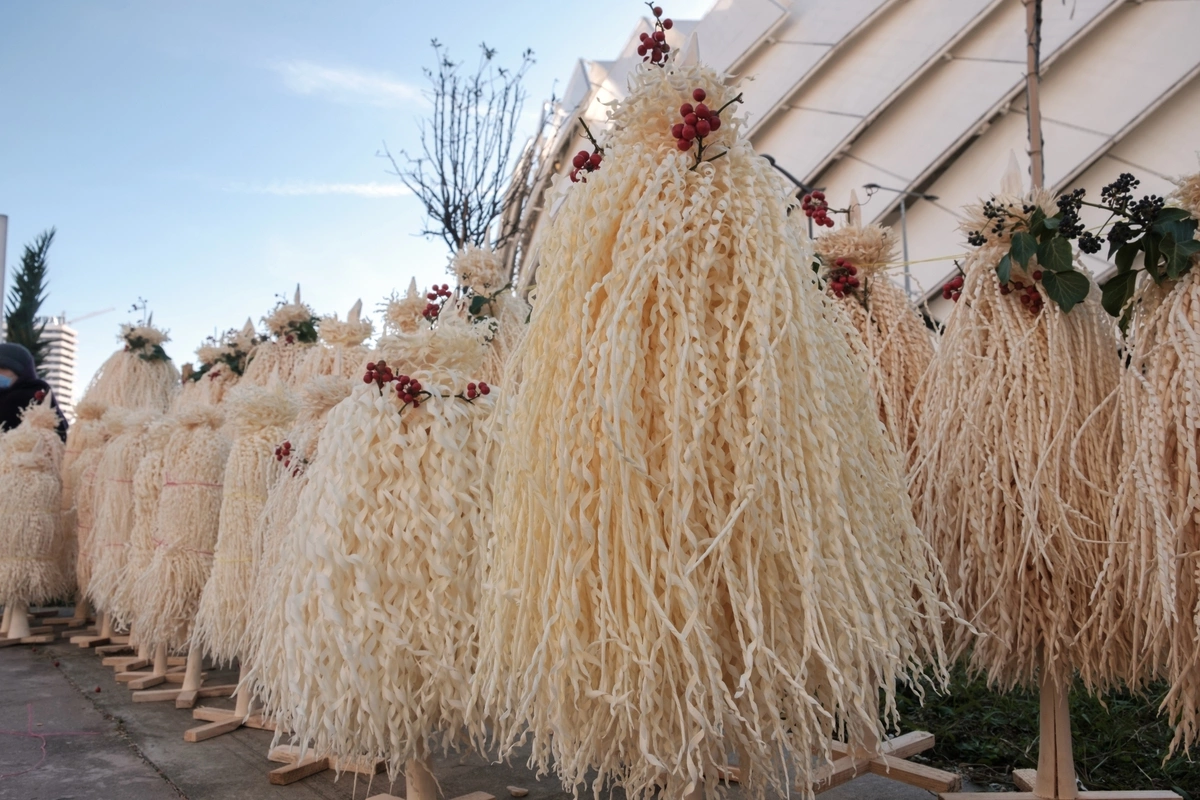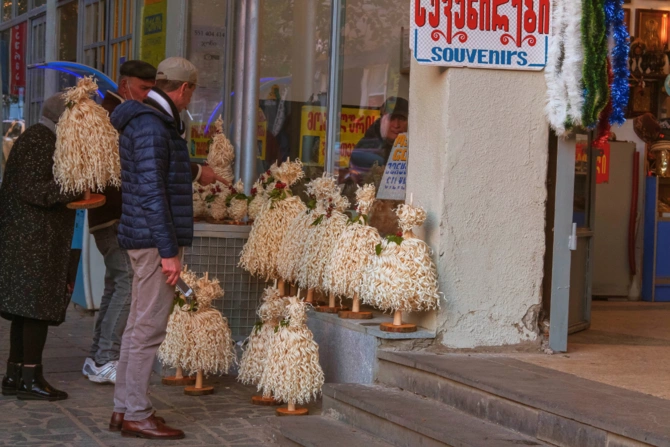
In recent years, the Chichilaki, Georgia’s traditional Christmas tree, has made a comeback. Onnik James Krikorian investigates the tree’s history and its modern eco-friendly usage.
Image: naskami/Shutterstock
With Georgia celebrating Christmas on 7 January rather than on 25 December, Tbilisi is instead first gearing up for the New Year. The illuminations have been installed, and festive trees will soon line the streets. The traditional yolka, dating back to St. Peter the Great, resembles their counterparts found elsewhere for Christmas. However, it also has special significance in the former Soviet Union, given that outward displays of religiosity were frowned upon and prohibited.
With Christmastrees banned, the New Year tree took its place and was encouraged after 1935. This also meant they were just as likely to be seen in Azerbaijan and other countries in Moscow’s orbit that could otherwise be considered ostensibly Islamic or at least inhabited by Muslims, whether secular or not. With the former Soviet Union now a matter of history, while the debate over the tree continues in Central Asia, that is not the case for Christian-majority former republics.
Indeed, the lighting up of the New Year Tree in Tbilisi or Yerevan is an annual event. But a New Year Tree is not a Christmas Tree.
That is certainly true in Georgia, where the Chichilaki has been making a comeback in recent years. Banned during the Soviet era, they are most popular in the Guria and Samegrelo regions of the country, but the chichilaki is now also a common sight in Tbilisi, the capital. It’s featured on postage stamps, and in 2020, Georgian President Salome Zourabichvili announced that attempts would be made to have it included in the UNESCO list of Intangible Heritage.

Image: Evgeniya Telennaya/Shutterstock
But what is a chichilaki?
Rather than a tree, it is made up of several hazelnut branches

But since 2015, Tbilisi’s Zoo has requested that people instead bring their chichilaki to decorate the enclosures of some of their animals, especially bears and deer.
But their environmental benefits are now often promoted. Rather than uprooting pine trees, they are instead made from pruned branches. The process includes cutting a branch of a hazelnut tree, soaking it in water, drying it, removing its bark, and then shaving it to resemble its tree or beard-like shape. Those curved shavings are also said to represent the sun. They can vary in height from 20 centimetres to a few metres.
Though more internationally recognizable New Year or Christmas trees are also on display in Georgia, most famously in front of the parliament building on Tbilisi’s Rustaveli Avenue, the Georgian presidential residence will have several chichilaki on display outside and on its balconies, all decorated with lights just as stereotypical seasonal trees are.
Share on social media